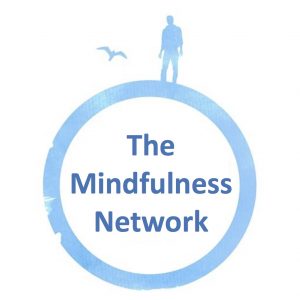
A Blog by Ariana Faris, a supervisor with the Mindfulness Network

When Zarlasht Halaimzai asked me to lead a mindfulness session for women in Idomeni, a refugee encampment on the borders of Northern Greece and Madeconia last March, I thought she was mad. It would mean running the session in a small tent in the middle of the refugee encampment with helicopters whirring overhead and children peering in to see what was going on. It would mean Zarlasht, who is a humanitarian worker not a mindfulness teacher, having to simultaneously translate into Dari the guided practices I was leading. It would mean trying to find ways of explaining some of the key concepts with examples and explanations that would transcend cultural borders. It was never going to work, or so I thought! And yet that is exactly what we did. The women and I ate a raisin mindfully together; we practised mindfulness of breathing and body scans and some mindful movement. The women told us that they experienced relief in just attending to the breath, moment by moment. They said that for the first time since leaving their homes, they experienced some calm and could just be themselves. We were shocked at how much they appeared to benefit despite the crazy circumstances in which we were practising.
Further sessions in Arabic with Syrian women proved more difficult. I worked with Reham Kenane, a warm and deeply compassionate Palestinian psychologist whose English was better than my Arabic, but still very far from fluent. Google translate helped, but interfered somewhat with the flow of guiding. Despite this obstacle, we found shared ways of understanding how moment-to-moment awareness of the present through mindfulness of breathing could offer space, choices and possibilities where there otherwise appeared to be none. We discussed how in childbirth, for example, dealing with each contraction one at a time could enable us to manage the pain of labour and how coming to the breath was key to finding this present moment focus. Drawing on examples and metaphors from our shared experience helped us to bridge the barriers and limitations of language and cultural differences.
It was a challenge to find ways to work cross culturally. Language is a major barrier, but it was also difficult trying to capture the essence of mindfulness or to formulate a definition that could be understood in meaningful ways from different cultural perspectives. During the many emotional moments and tears shed in these sessions, I was reminded once again, though, that the practices themselves do the work and can transcend language and cultural borders even in these extraordinary and extreme circumstances. Several times women said that the feeling they got was that it was like prayer. One woman said that the experience of practising mindfulness made her feel closer to God. With this group, I certainly felt that that the spirituality naturally embedded in their lives lent an ease with which people settled into a sitting practice. It looked as if it was very familiar to them right from the beginning.
“The dialogue grows through the practices, through the embodiment of acceptance and willingness to be with what’s unknown.” Sheila Webb
And so the idea for Mindfulness without Borders was born. We began to explore how we could pilot mindfulness courses for refugee women in the UK. We discussed how to deliver the courses, in Arabic and Farsi, in Cardiff and London, both places with large refugee communities. Coincidently, Oxford Mindfulness Centre was launching their first initiative designed to increase access to MBCT to diverse populations who otherwise would not be able to attend such courses.
Sitting with the intimacy of deep connection, with women whose profound pain was matched by their extraordinary resilience, challenged me and my colleagues (Alison Evans, Hannaa Elsayed, Zarlasht Halaimzai, Arafa Mustafa, Iona Hannigan Lewis and Sheila Webb) to feel our way towards creating safety in working with trauma through mindfulness. We developed a curriculum sensitive to the needs of refugee communities without treating the women as trauma victims. Inspired by Renos Papadopolous’ concept of Adversity Accelerated Development and the work of Bessel Van De Kolk, Peter Levine, David Emerson and Babette Rochschild – who advocate mindfulness as a central practice in bringing people into the present when trauma keeps us stuck in the past – we are continuing to explore what works using an Action Research model of reflexive cycles
How we work with different refugee populations is ever evolving. For example, women who have experienced gender-based violence and trauma often experience somatic and physical aches and pains. We know that in many cultures, somatic pain often shows up as a manifestation of psychological distress and can be talked about directly, whereas it may be less possible and acceptable to speak about psychological distress.
“This is something like mental healing…” participant comment
At the same time, we recognise that refugee women are not a homogenous population. Each group is different and we found that women who came from Asian cultures were more reserved whilst women from the Middle East and Africa appeared to talk more freely. Working with groups of refugee women revealed a range of complexities, including: issues around power and trust; a learned injunction to be grateful; guardedness; and concerns about safety. We deliberately chose to share personal stories in order to flatten the hierarchy and create a sense of shared identity that was facilitative, but also acknowledged our differences. Without doubt, we learned from each other.
To learn more about the work of Mindfulness Without Borders, please visit their website at www.mindfulnesswithoutborders.co.uk.
To learn more about the Oxford Mindfulness Centre’s charitable activities, including widening access initiative and bursaries, please visit their website at http://oxfordmindfulness.org/about-us/about/charitable-activities/.




